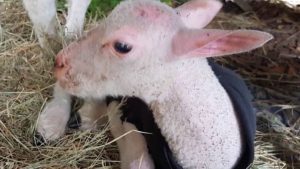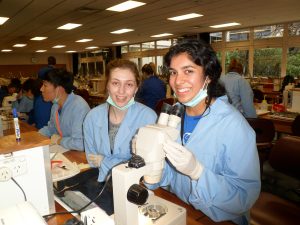Actually it starts with listening, thinking, reading and then some more thinking. The nature of Science learning! This year I have had the luxury of having the opportunity to listen to the radio while I am working. I find my ears prick up and I tune in when an interesting science item comes on. Radio New Zealand is my frequency of choice. Even if it’s not yours it is well worth dipping into for anyone with an interest in keeping up with the latest Science news. They are easy listening and many of the programmes and interviews are available as podcasts (see below). The RNZ website is easy to search and there is a RNZ App if you like to listen while on the move.
Here are a few recent items that you might find interesting.
A very ugly lamb
A rare lamb was born in Rotorua that is basically bald – a lamb without wool. What would happen to this genetic rarity in the wild?
The Mosquito. Our deadliest predator and a fascinating discussion about Sickle cell.
Professor Timothy Winegard of Colorado Mesa University talks about the impact of the mosquito – the deadly diseases it carries have killed as many as 50 million people. One such disease is malaria. Individuals with the genetic condition sickle cell anaemia have resistance to malaria.
I found the section on American Football players who had sickle cell anaemia dying, or, coming close to dying, after pushing their body to the limit, particularly interesting. The deformed cells cannot carry enough oxygen and clog the blood supply to the muscles and tissue leading to tissue death and potentially a heart attack. Those of you who follow sport know that playing sport at high altitude, where there is less oxygen, is difficult and when players with sickle cell take to the field they are particularly vulnerable. This happens when the American Football players with sickle cell play at high altitude meaning they have to take precautions.
How did such a harmful condition end up being selected for?
Since the average age of a person with sickle cell is 23, there is enough opportunity for this trait to have been passed on before the person succumbs to the condition. It persists too because this mutant gene gave an evolutionary advantage against malaria (which must have been a strong selection pressure).
Read more here:
Ernest Rutherford
NZ Biography of the Kiwi who split the atom 100 years ago. This book was written by Dr John Campbell, a NZ physicist himself. This link takes you to the written and audio version of the interview with Dr Campbell. . A must for physics and chemistry students!
https://www.rnz.co.nz/national/programmes/afternoons/audio/2018709863/nz-biography-ernest-rutherford
Tales from the Periodic Table
If you haven’t been following this series check it out! Different angles on the periodic table.
https://www.rnz.co.nz/programmes/elemental/story/2018683167/tales-from-the-periodic-table
and `Elemental’
https://www.rnz.co.nz/programmes/elemental
The `most boring chemical element’ is a great article that highlights some of the quirky sides of the periodic table.
https://www.rnz.co.nz/programmes/elemental/story/2018706628/the-most-boring-chemical-element
Lord of the Rings Fans
Peter Jackson was inspired by the black tunnel web spider of NZ when creating the spider Shelob in the movie trilogy.
Nicola Toki of DOC has a weekly RNZ radio spot `Critter of the Week’ that focuses on a NZ species.
Podcasts on the other species can be found here:
https://www.rnz.co.nz/national/programmes/afternoons/collections/critter-of-the-week










Recent Comments